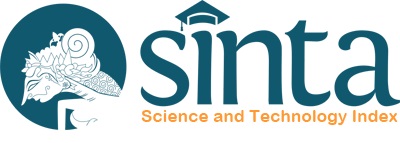Analysis of Microbial Contamination Risk Factors in Refillable Drinking Water Depots in Makassar City
DOI:
https://doi.org/10.32382/sulo.v25i2.1828Keywords:
Microbial contamination; risk factors; DAMIUAbstract
Refillable drinking water (AMIU) is a practical solution for the people of Makassar City in meeting their daily drinking water needs. However, its microbiological quality is often questioned due to contamination of Escherichia coli (E. coli) and Coliform. Studies show that 45% of refillable drinking water depots (DAMIUs) in Makassar are contaminated with E. coli, which has the potential to cause gastrointestinal diseases. Examination data from the Health Office has identified DAMIU that is positive for contamination, while risk factors such as hygiene and sanitation, treatment methods, and handling practices by operators have not been widely studied. This study aims to identify contaminated DAMIU and analyze risk factors for microbial contamination to formulate recommendations for improvement. The research design used a cross-sectional method with two stages, namely analysis of secondary data from the Health Office's examination results to map E. coli positive DAMIU, as well as field surveys through hygiene-sanitation observation and operator interviews. The analysis was carried out quantitatively using the Microbial Risk Assessment (MRA) approach. The results showed 7 E. coli positive DAMIU with levels of 4–30 CFU/100 ml. The Probability of Illness (Pill) value ranges from 2.8 × 10⁻¹ to 3.5 × 10⁻¹, indicating a high risk (28–35%) of water-based diseases such as diarrhea and gastroenteritis. All DAMIU studied did not meet the microbiological standards of the Minister of Health Regulation No. 2 of 2023. Poor hygiene-sanitary factors, suboptimal water treatment methods, and unhygienic operator behavior are the main causes of contamination. Increased supervision, routine microbiological examinations, operator training, and disciplined maintenance of equipment, as well as public awareness are needed to choose a certified hygienic and sanitation depot.
Keywords : Microbial contamination; risk factors; DAMIU
References
Ainun, A. A., Sulaeman, U., & Gafur, A. (2022). Mikrobial Risk Assessment (MRA) air minum isi ulang pada depot air minum (DAM) di wilayah kerja Puskesmas Antang Kota Makassar. Window of Public Health Journal, 3(2), 321–331. https://doi.org/10.33096/woph.v3i2.321-331
Gitter, A., Boellstorff, D. E., Mena, K. D., Gholson, D. M., Pieper, K. J., Chavarria, C. A., & Gentry, T. J. (2023). Quantitative microbial risk assessment for private wells in flood-impacted areas. Water, 15(3), 469. https://doi.org/10.3390/w15030469
Haas, C. N., Rose, J. B., & Gerba, C. P. (1999). Quantitative microbial risk assessment. John Wiley & Sons.
Herwin, H. A., Azizah, R., Keman, S., & Leonita, A. (2022). Analisis hubungan sanitasi tempat dan alat dengan keberadaan bakteri Escherichia coli pada depot air minum isi ulang (DAMIU) di Indonesia. Jurnal Kesehatan, 16(1), 67–72. https://doi.org/10.38165/jk.v16i1.278
Kementerian Kesehatan Republik Indonesia. (2020). Laporan Nasional Riset Kesehatan Dasar (Riskesdas) 2018. Badan Penelitian dan Pengembangan Kesehatan. http://labdata.litbang.kemkes.go.id/images/download/laporan/RKD/2018/Laporan_Nasional_RKD2018_FINAL.pdf
Librianti, D., Joko, T., & Dewanti, N. A. Y. (2023). Hubungan sanitasi tempat, sanitasi peralatan, dan higiene penjamah dengan bakteri Coliform pada depot air minum di Kecamatan Sukmajaya. Jurnal Kesehatan Masyarakat (e-Journal), 11(2), 245–255. https://doi.org/10.14710/jkm.v11i2.245-255
Pakpahan, R. S., Picauly, I., & Mahayasa, I. N. W. (2015). Cemaran mikroba Escherichia coli dan total bakteri koliform pada air minum isi ulang. Kesmas: National Public Health Journal, 9(4), 300–304. https://doi.org/10.21109/kesmas.v9i4.812
Puspitasari, A., Nurul Hikmah, B., & Rahman, H. (2020). Studi kualitas bakteriologis depot air minum isi ulang di wilayah kerja Puskesmas Tamangapa Kota Makassar. Window of Public Health Journal, 1(1), 16–21. https://doi.org/10.33096/woph.v1i1.16-21
Purba, M. R., Harahap, E. Y., & Silitonga, D. P. (2022). Hubungan kondisi tempat, peralatan, dan operator dengan kualitas air minum isi ulang di Medan Belawan. Jurnal Kesmas Indonesia, 14(3), 123–130. https://doi.org/10.35874/jki.v14i3.1693
Syaputra, M. I., Yasnani, Y., & Meliahsari, R. (2023). Analisis bakteri Escherichia coli dan gambaran higiene sanitasi depot air minum isi ulang di wilayah kerja Puskesmas Morosi Kabupaten Konawe. Jurnal Kesehatan Lingkungan Universitas Halu Oleo, 4(3), 145–154. https://doi.org/10.56189/jkluho.v4i3.145
Teunis, P. F. M., & Havelaar, A. H. (2020). Risk assessment of infectious diseases transmitted by food and water. International Journal of Food Microbiology, 329, 108–116. https://doi.org/10.1016/j.ijfoodmicro.2020.108516
Universitas Dehasen Bengkulu. (2023). Analisis kualitas mikrobiologi depot air minum isi ulang di Kota Bengkulu. Jurnal Nasional Public Health, 8(1), 45–54. https://doi.org/10.51978/jnph.v8i1.455
World Health Organization. (2022). Guidelines for drinking-water quality: Fourth edition incorporating the first addendum. WHO Press. https://www.who.int/publications/i/item/9789240045064
Wulandari, P., & Pristiyaningrum, A. (2025). Analisis cemaran mikroba E. coli dan total koliform pada depot air minum isi ulang: Studi kasus di Pulo Gadung, Jakarta Timur. Jurnal Kesehatan Lingkungan Indonesia, 24(3), 319–326. https://doi.org/10.14710/jkli.73503
Downloads
Published
How to Cite
Issue
Section
PDF (Bahasa Indonesia) downloaded: 0


















